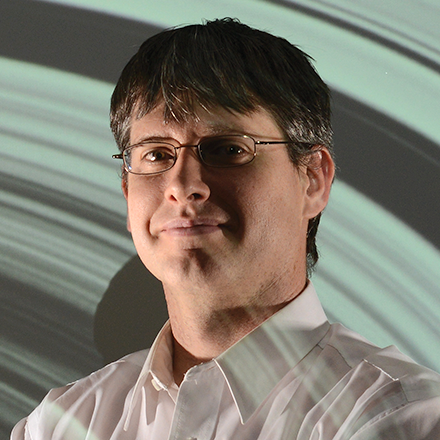Matthew Tiscareno

Senior Research Scientist
Disciplines: Solar System Dynamics, Planetary Rings
Degree/Major: Ph.D., Planetary Science, 2004, University of Arizona
Curriculum vitae: TiscarenoCV.pdf
matt@seti.orgDr. Tiscareno studies how things move (dynamics) in the solar system. In many cases, he applies dynamical methods to Saturn’s rings and other planetary ring systems. He is a Participating Scientist and an Imaging Team Associate for the Cassini spacecraft, which has been orbiting Saturn since 2004. He is also involved with the Webb Telescope (which will launch in 2018 as the successor to Hubble), with efforts to send a spacecraft to Uranus and Neptune, and with other concepts for future space missions. He is the lead editor for the full-length technical book Planetary Ring Systems, due to be published in 2017 by Cambridge University Press.
Dr. Tiscareno led the discovery of small moons embedded in Saturn’s rings, seen indirectly by the propeller-shaped disturbances they create in the surrounding ring material. Drawing on the analogy with proto-planets embedded in the disk of an early solar system, he is continuing to study the effects of the “propeller” moons on their disk (by high-resolution imaging of the propeller-shaped disturbance), as well as the effects of the disk back on the moons (by tracking the propellers through time to study their orbital evolution).
Dr. Tiscareno is working on a number of other projects related to Saturn’s rings, including studying waves that propagate radially through the rings, and the azimuthally scalloped structure of gap edges, both of which (like “propellers”) involve disk-moon interactions and thus have applications to understanding young solar systems.
Dr. Tiscareno is also interested in how moons rotate. He recently was part of a team that used a tiny wobble in the rotation of Saturn’s moon Enceladus to prove that that moon’s subsurface water extends globally as a subsurface ocean.
